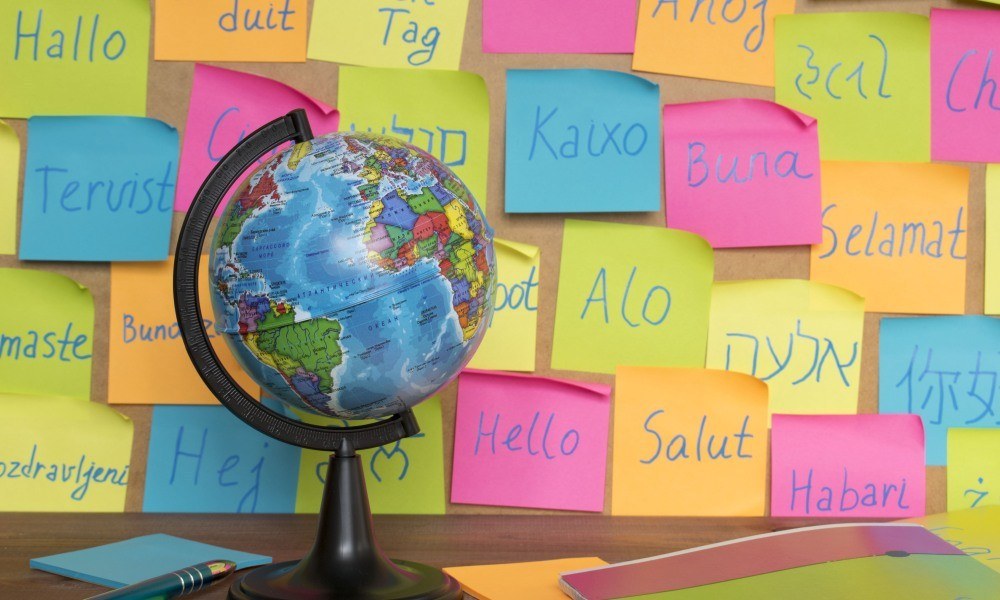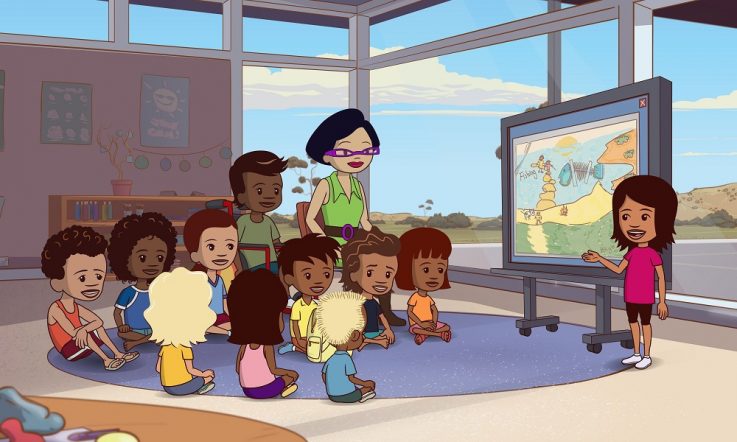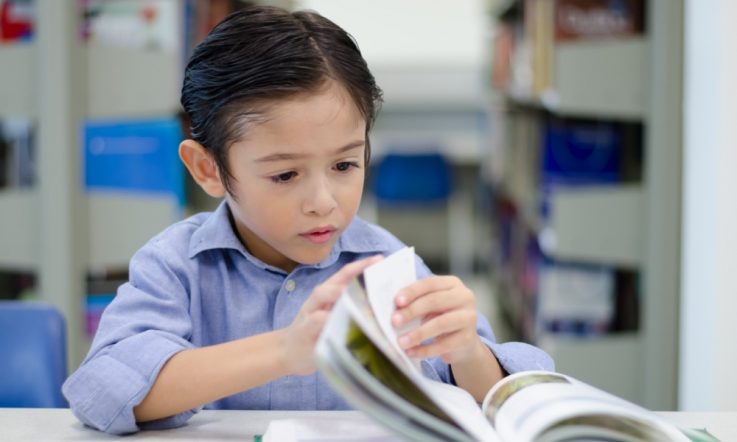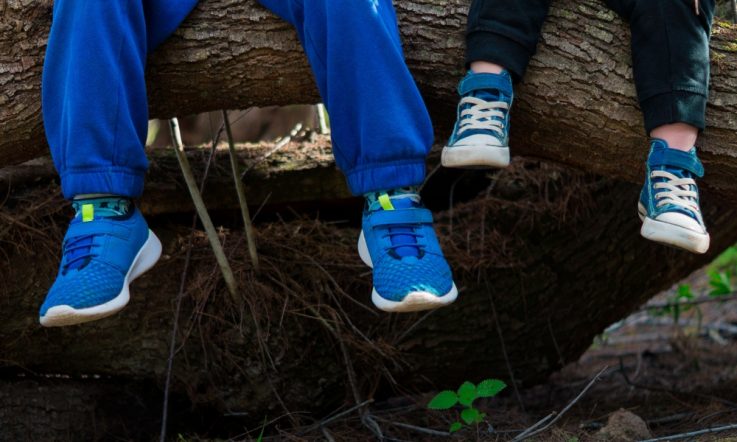Having a deep understanding of multilingual students' interests, skills, and experiences can be a challenge for any teacher in a busy classroom, but new research is proving how important it is to do so.
Dr Jacqueline D'warte from the School of Education at Western Sydney University has undertaken research into multilingualism in schools by actively involving teachers and students as co-researchers. The research focuses on how language and literacy practices improve student confidence and enhance learning outcomes.
Funded by the New South Wales Department of Education, this study was borne out of D'warte's desire to understand what each student brings to the classroom, and to draw out how teachers can build on that knowledge.
‘Some of the teachers in those classrooms are thinking, “Well I have all these students who come from lots of different places and often speak different languages, how do I build on that knowledge that they're bringing to school?”' D'warte says.
The project is now in its fourth iteration. To date, there have been 13 schools, 28 teachers and approximately 800 students in Years 1-6 (aged 6-14) involved across the four projects.
A significant proportion of students were identified as learning English as an Additional Language/Dialect, and between 76 and 99 per cent of students were from Language Backgrounds Other Than English. Nine to 17 languages were spoken by students in each classroom. D'warte says she worked in each school for around two or three terms.
Undertaking the study
While the teachers were introduced to research methods, the students were invited to also become researchers. They collected data from talking to each other. Students were asked how many languages they speak, who they speak it with, when and where they speak it, and whether they translate the language for others.
‘I also developed what's called the “Language Mapping Methodology” where students could visually represent the way they read, write, talk and listen,' D'warte says. ‘Sometimes we used first language partners and community language teachers in schools to interview in first language because some of the students were still learning English.'
Throughout the process, D'warte also went into every classroom and conducted interviews with the help of the classroom teachers.
‘So we actually talked about communication being multimodal – how people communicate through dance, music, art – we really did lots of work around communication to begin with and then we actually trained them, even from Year 1, to be researchers,' she says. ‘That meant that they developed their own questions, they interviewed each other, they had observation diaries and so on. So they collected all their information themselves.'
Once all the data was collated, it was presented back to the students. Teachers used this information to design a series of lessons and activities they could use in their classrooms, and match them to the learning outcomes written in English.
‘So in a maths lesson students graphed how many languages were in our room, how many people speak this language and (depending on the grade) … so in sixth grade, they used them to look at means and averages and percentages. In Year 1, they looked at vocab like “most, least, less” in maths to develop that. So all of that data that the students collected became discussion and curriculum for the class.'
A starting point for learning
This approach to research, D'warte says, moves learning away from focusing on what was limited or lacking for students who are English as an Additional Language, Dialect Learners or from migrant and refugee communities, to using students' knowledge and skill as a starting point for learning.
‘So in a sense it was validating the languages that students spoke and then thinking about what we can do with it,' D'warte says. ‘I can tell you something that's interesting too, in interviewing almost 800 students, I've had maybe five across the data set who thought that being bilingual was anything special. Most kids don't think that bilingual capacity, multilingual capacity, has anything to do with school.'
She says it's understandable why the students feel this way, as everything is assessed in English. This can also lead teachers to having low expectations of these students, not realising the rich, linguistic work that is going on outside of classrooms.
In addition, teachers in this study were surprised by the variety and frequency of students' language use, their multimodal translating and language brokering. D'warte says that, through this work, teachers began to understand the importance of ensuring that students' languages were validated in the classroom.
‘So starting from what they know and can do, all the ways they communicate every day inside and outside of school and then using that to build learning and activities and curriculum,' she says.
‘We're looking also at this notion of linguistic interdependence. Research would suggest that if you've got strong grounding in one language, then your second language acquisition becomes easier.
‘What happens sometimes in primary schools, which is where we predominantly did this work, they're still developing their first language and so there's this kind of relationship between parents saying, “Oh I only want you to learn English”, and children thinking “I shouldn't be using my first language”. Yet, sometimes they're using their first language in really sophisticated ways.'
Improving confidence
By sharing their stories and their experiences, D'warte says students became more confident in the classroom. This was particularly evident in the students who found themselves struggling with English. As a result of this confidence, D'warte says she was excited to see that teachers actually increased the complexity of the tasks that they assigned those individuals.
‘What they realise is that students are really engaging in quite complex communication outside of the classroom, that they've got rich experiences and they're doing all sorts of things,' D'warte says.
‘So their expectation of what students know and could do was incredibly increased as a result of this and all the teachers said that, “I was so surprised, I didn't understand, I didn't realise”.'
Another finding to come out of this research was the disclosure of previously unknown information. Some students, for example, disclosed their Aboriginal identity and their multilingual capacity. Another outcome was that parental participation in school also increased.
‘What happened then was parents started to come into the school,' she says. ‘In the last iteration of the project, we included a bilingual reading program. So, what that meant is that parents came in and read a book in a first language and English, so the teacher and the parent did this together.'
Implication for teachers and school leaders
For teachers working in culturally and linguistically diverse classrooms, D'warte says it's important to actually take some time to get to know them.
‘Students were doing research about countries of the world, they were going out in their neighbourhood and finding out the history of particular communities. It just lead to a whole range of curriculum. If you can find out who your students are and the things they can do, it really makes a difference,' she says.
D'warte says this approach also lead to greater engagement from students, as it was an authentic curriculum that they could relate to on a personal level. She also found that teachers became incredibly creative about the ways they could weave linguistic experiences into their everyday lessons.
‘They got the students to write a persuasive essay about “Should we be able to speak another language?” Now they came to that so well because it was from their own experience.
‘One of the schools was having problems with cyber bullying so the kids made a cyberbullying campaign in multiple languages for the community. It created an authentic and purposeful community experience.'
D'warte says these lessons really allowed students to display their skills, and teachers also had the opportunity to show that they really care about the languages the students speak.
‘There's such fantastic research around about the cognitive benefit of bilingualism so the more we can harness that in our classrooms, the better it will be,' she says.
Related reading
D'warte, J. (2014). Exploring linguistic repertoires: Multiple language use and multimodal literacy activity in five classrooms. Australian Journal of Language and Literacy, 37 (1) 21.
D'warte, J. (2018). Enhancing English Learning: Building on Linguistic and Cultural Repertoires in 3 School Settings: A Project Report for NSW Department of Education 2018.
D'warte, J. (2018). '[In Press] Recognizing and leveraging the bilingual meaning-making potential of young people aged six to eight years old in one Australian classroom', Journal of Early Childhood Literacy .
D'warte, J., Daniel, P. and Allan, A. (2018). 'Enhancing learning through building on students' and parents' linguistic and cultural repertoires in Year 1 classrooms', Practical Literacy, vol 23, no 1, pp 31 - 34.
D'warte, J. (2019). 'Mapping languages and literacies with multilingual students in Australian classrooms', The Reading Teacher, vol 72, no 5 , pp 663 - 669.
Somerville, M., D'warte, J., & Sawyer, W. (2016). Building on Children's Linguistic Repertoires to Enrich Learning: A Project Report for the NSW Department of Education.
In what ways do you seek to understand students’ linguistic skills, experiences and knowledge? Do you specifically ask students about the other languages they speak and how they use that language outside of school?
Teachers in this study designed lessons that enriched the learning of multilingual students and allowed them to showcase their skills. What opportunities do you provide for students to showcase their existing skills?



